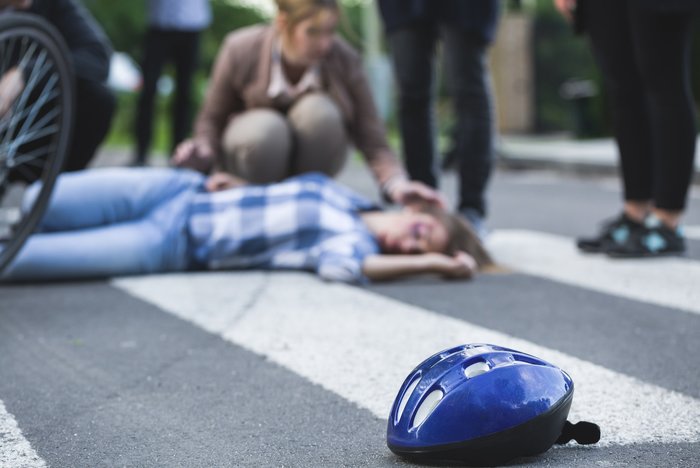
Traumatic brain injuries are often in the news. Whether the damage is combat-related, work-related, sports injuries, or resulting from falls, much attention is being paid to their causes and treatment. traumatic brain injuries (TBIs) have been elevated to front-page news. The rate of TBIs in America is reaching frightening proportions. Here are some statistics:
TBIs in the United States
- An estimated 2.8 million people sustain a TBI annually; of these:
- 50,000 die.
- 282,000 are hospitalized.
- About 90% – 2.5 million – are treated and released from an ER
- 80,000 to 90,000 experience the onset of a long-term disability
- Because of past TBIs, 5.3 million live with a permanent TBI-related disability
- TBI contributes to 30% of all injury-related deaths
- Every day, 153 die from injuries that include TBI
- The leading cause of TBI resulting in hospitalization is motor vehicle crashes
- Direct medical costs and indirect costs of TBI, such as lost productivity, totaled an estimated $60 billion in the United States in 2000.
TBI by Age
- Children aged 0 to 4 years, older adolescents aged 15 to 19 years, and adults aged 65 years and older are likeliest to sustain a TBI.
- Almost half a million (473,947) emergency department visits for TBI are made annually by children aged 0 to 14 years.
- Adults aged 75 years and older have the highest rates of TBI-related hospitalization and death.
TBI by Sex
- In every age group, TBI rates are higher for males than for females.
- Males aged 0 to 4 years have the highest rates of TBI-related emergency department visits, hospitalizations, and deaths combined.
TBI by External Cause
- The leading cause of TBI-related deaths comes from violence. Topping the list is suicidal behavior and assaults that involve firearms.
- Falls are the leading cause of TBI in the elderly.
PHYSIOLOGY OF TBIs
An MTBI, often referred to as a concussion, is a traumatically induced physiological disruption of brain function, usually associated with at least one of the following signs and symptoms:
- Can’t recall events before or after the concussive incident
- Clumsy movement
- Answers questions slowly.
- Loses consciousness – even briefly.
- Displays mood, behavior, or personality changes.
TBIs are generally divided into two categories:
- Primary brain injury – Direct trauma to the brain and associated structures, occurring at the time of injury
- Secondary brain injury – Ongoing injurie set in motion by the primary injury. They typically include:
- Mass effect: Swelling leading to elevated intracranial pressure and mechanical shifting; can lead to herniation
- Hypoxia: From inadequate delivery of oxygen to injured brain tissue
- Hypotension and inadequate cerebral blood flow: Reduces flow of oxygen and glucose to the brain
- Cellular mechanisms, including energy failure and inflammation, leading to cell death
TYPES OF SKULL FRACTURES
TBIs do not necessarily involve skull fractures, but any patient who has sustained a head injury should be suspected until proven otherwise. Generally, types of skull fractures include:
- Linear – Characterized by a single fracture line
- Usually occurs at the suture line
- Swelling and point tenderness at the site
- Usually, it does not require surgical intervention
- Depressed – When a portion of the skull is pushed inward
- The scalp may or may not be torn
- Swelling and bony step-off may be palpated at the site
- Open versus closed, depending on whether the dura mater has been breached
- Comminuted – Skull is splintered or shattered into many pieces
- Pieces may act as projectiles, directly injuring the meningeal layers
- Common in blunt-force injuries (e.g., a baseball bat to the head)
THE ROLE OF SUCTION IN TREATING HEAD TRAUMA
The key to treating the head-injured patient is maintaining adequate oxygenation and perfusion in the brain. As with every patient, it all begins with a patent airway. That’s where suction plays a role. In head injuries, the patient may be unable to protect his or her airway from blood, secretions, or vomit. Utilizing your portable suction unit may be the only means of preventing aspiration or hypoxia.
In cases of diminished level of consciousness or unresponsiveness, you must remain vigilant until the airway is secured. If intubating, be sure to keep the suction handy, to visualize the cords, and remove bodily fluids. In many cases, the injury may not be restricted to the head; the face may be involved (Le Fort fractures), or the patient may be neurologically impaired, making airway patency difficult. Be sure to have the portable suction unit within reach.
Ensuring adequate oxygenation to the brain can preserve delicate tissues, reduce swelling, and possibly ward off secondary injuries. So, from now on, when you think of head injuries, think “portable suction unit!” It may be key to protecting the patient from further injury and death.
Editor's Note: This blog was originally published in October, 2017. It has been re-published with additional up to date content.

















